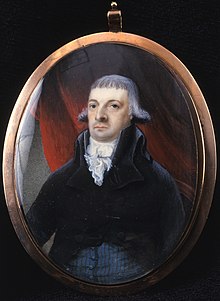Who Was the “person out of Boston last Night”?
…the Boston gentry supposed it to be a token of the deep impression the [king’s] Speech had made, and a signal of submission—That they were much disappointed at finding several days elapse without some formal measure leading to a surrender, with which they had begun to flatter themselves.——This is bunk. According to the article’s own timing, the flag went up on 2 January and the latest news from Cambridge was written on 4 January, so “several days” had not elapsed.
This newspaper anecdote is thus too good to be true. Joseph Reed, who most likely supplied the article, must have been tickled with the idea of the royalists falsely thinking the Continental Army was ready to give up.
In fact, no sources created inside Boston show the royal authorities thinking the rebels were about to surrender. The two British mentions of the flag later that January correctly interpreted it as a signal of colonial unity. So where did the story come from?
The first version appeared in Gen. George Washington’s 4 January letter to Reed:
we had hoisted the Union Flag in compliment to the United Colonies, but behold! it was receivd in Boston as a token of the deep Impression the Speech had made upon Us, and as a signal of Submission—so we learn by a person out of Boston last NightThat person might have had an idiosyncratic interpretation of the flag. More likely, I suspect that person described initial perplexity inside the town on seeing the new flag, which Washington preferred to interpret in the way that made his enemy seem most foolish.
So who was that person who arrived at Cambridge headquarters on 3 January?
On the same day that Washington wrote to Reed, he sent a more formal letter to John Hancock as chairman of the Continental Congress. In that report the general wrote:
By a very Intelligent Gentleman, a Mr Hutchinson from Boston, I learn that it was Admiral [Molyneux] Shuldhum that came into the harbour on Saturday last . . .Washington sent that same information to Reed, and it went into the newspaper.
We also learn from this Gentleman & others, that the Troops embarked for Hallifax, as mentioned in my Letter of the 16—were really designed for that place . . .
I am also Informed of a Fleet now getting ready under the Convoy of the Scarborough & Fowey Men of War, consisting of 5 Transports & 2 Bomb Vessels, with about 300 marines & Several Flat bottom’d Boats—It is whispered that they are designed for Newport, but generally thought in Boston, that it is meant for Long-Island . . .
Also, at “8 o’clock at night” on “the 3d.” of January, Washington’s aide Stephen Moylan wrote to Reed:
a very inteligent man got out of Boston this day, says, two of the Regiments of the Irish embarkation pushed for the River of St. Lawrence . . .Reed didn’t include that last tidbit in his digest for the newspaper—probably because he knew it was false.
he allso says that it was generally thought in Boston that Nova Scotia was in our possession——
Thus, although Gen. Washington mentioned “others,” his headquarters’ main source for information from inside Boston in those two days was “Mr Hutchinson.” Both letters called him “intelligent,” which Dr. Samuel Johnson described as meaning both “knowing” and “giving intelligence.”
A footnote in the Washington Papers says, “Mr. Hutchinson has not been identified.” So let’s do something about that.
On Tuesday, 9 January, the Rev. Dr. Samuel Cooper wrote in his diary:
I din’d at Mr. [Edward] Payne’s with Mr. Shrimpton Hutchinson, Deacon [Ebenezer] Storer, [Joseph] Barrell &c.The transcription of Cooper’s diary published in the American Historical Review in 1901 doesn’t identify the men Cooper dined with. But at this time Cooper and his family were living in Waltham, and Edward Payne’s son later wrote that during the siege his father “lived at Medford and at Waltham.” Payne, Storer, and Barrell all came from the top echelon of Boston businessmen, and they all appeared several times in Cooper’s diary before this date.
Shrimpton Hutchinson (1719–1811, gravestone shown above) was another well established Boston merchant. As an Anglican and a cousin of Gov. Thomas Hutchinson, he had reasons to become a Loyalist. But instead he kept out of politics, even as a justice of the peace. We know he lived in Boston after the war, becoming one of the leaders of the King’s Chapel congregation.
I’ve looked for other signs of Shrimpton Hutchinson’s movements during 1775 and 1776 without success. Therefore, I can’t say for sure that he had left Boston just a few days before his dinner at Payne’s, which was the first time Cooper mentioned him. But he was the sort of older, upper-class, well-connected man that Gen. Washington and his aides would have respected as a valuable intelligence source.
TOMORROW: The missing copies of the king’s speech.







